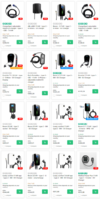@unk45 @petit_bateauThat also applies to the many OEM’s that still supply L2 chargers with EV sales, but surely those are diminishing as adoption rates rise. Otherwise there are almost countless L2 suppliers around the world, including many that supply multi-unit installations for shopping centers, commercial buildings and multi-family housing. I think even a 5% share is unlikely because of that context.
Fast charging clearly is a very different matter precisely because the infrastructure is more complex, maintenance is greater and energy infrastructure is more expensive to operate. That combination is the only structural advantage to the Supercharger network. Specifically for North America the unreliability and fragility of CCS1 provides powerful incentive for OEM change to NACS. Because the EU is CCS2, as is Supercharging, the EU advantage is primarily a single EU-UK standard network vs the many dozens of national/regional ones.
Under current conditions Tesla L2 charger solutions are very much the premium priced solution, which thrives in part by having the capacity to directly recognize individual VINs. Others with very slightly less functionality are sometimes less than half the price. L2 also easily acts as ‘just another plug’ with only reduction in amperage due to being a continuous load.
Those and other factors ensure that Tesla will not derive significant financial benefit from L2. FWIW, the many third party multi-unit solutions from ChargePoint, EverCharge, and dozens of others are far cheaper than those postulated by @Usain above.
as an aside vis a vis batteries & such & renewables growth & needing a _lot_ more batteries
(note: 550 GWH of batteries just in 2022 just in EV's)
(i'm quite sanguine about Tesla energy growth capabilities)
(and the temporary pause in stock price rise)
(semi log scale graph)(ie batteries gained `~ 9x - 10x)
".......While the growth of batteries for stationary storage has been spectacular, the global fleet of electric vehicles (EV) already represents a larger energy storage capacity than the stationary storage. The IEA estimates that EVs sold in 2022 had batteries with a total of 550 GWh of capacity [......'
note rate of growth of solar wind below
(wind & solar broken out above)
(below Y axis is 100, 1,000, 10,000, article is preliminary but authors need to clean up graphs IMHO)





